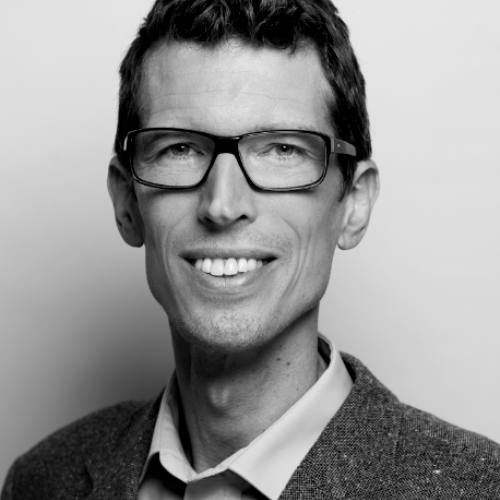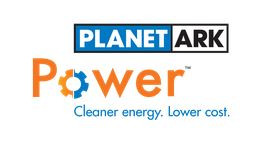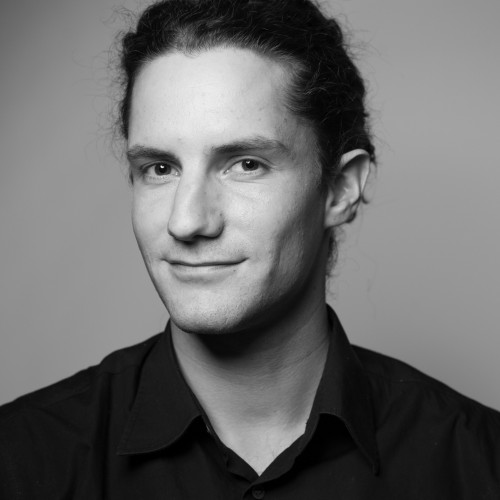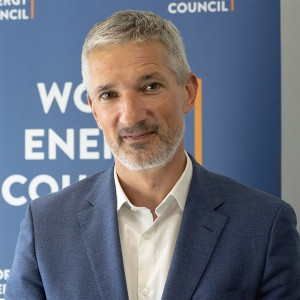Innovation takes center stage at Berlin Start-up Energy Transition Festival
Australia's Planet Ark Power enables massive roll-out of urban rooftop solar
Production peaks with excessive electricity generation and lows with shortages are a key challenge for the use of solar power. Hailing from one of the leading locations for private solar power use, Australian company Planet Ark Power says it has developed technology that evens out these production amplitudes and reduces voltage volatility. Clean Energy Wire spoke to founder and CEO Richard Romanowski.
Clean Energy Wire: Could you please explain your business idea in simple words?
Richard Romanowski: We significantly increase the amount of rooftop solar that the local distributed grid can handle. We can manage a 13-fold increase in the amount of rooftop solar that we can feed into the grid.
At present, the grid has limitations on the amount of power that can be fed into it because it was designed and built as a one-way system. From a grid engineer’s perspective, too much solar creates a voltage problem that hurts the grid and can lead to blackouts, machine problems and so on. We fix that problem with a digital device that facilitates a 100 percent electricity flow in both directions, as opposed to the limit that is set now. That allows us to increase the amount of rooftop solar in a suburb, and it also allows us to put virtual power plants into buildings and houses. We have various virtual power plants in Australia, for example by Tesla, but in effect they are not working effectively because of this voltage problem.
What’s the main hurdle holding you back?
More than anything, it’s about change management. The roadblocks are mainly about education and a huge paradigm shift. Before Uber came along, no one thought that you could order a car with an app. But now that it’s there, everyone gets it. Our case is similar. But we’re getting there. In Australia, we’re working with the local distribution grid. We’ve installed a couple of demonstration sites, they’re happy, and now we’re going to 50 demonstration sites, each one 1 to 3 megawatts – so we’re talking quite large installations. Our focus is filling big warehouse rooftops.
When I flew into Germany, I looked down and thought: “Oh – you have the same problem we have! Look at all that empty roof space!” Why are we building new solar farms in the countryside that require a new transmission grid at very high cost to connect it, when you have unused community and business rooftops you can use? With our technology, you don’t have to do anything to the grid, and use the infrastructure in a much better way.
But you need patience when working with incumbent industries, and teach them how to do things differently. It’s been hard, but now we have some traction and credibility. We also work with large property owners, because they want to know that our system is working before committing their rooftops. We pay them rent for their rooftops, they can sell the energy to their tenants cheaper than they can buy it, so they get a green sticky tenant who stays longer, they get an increase in the value of their property, and we sell the excess solar into the grid – we all make money! We’re doing that with pension funds and big investment banks, who start to spend hundreds of millions of dollars on urban rooftop solar in combination with virtual power plant batteries.
Do you plan to expand into Germany?
Yes, absolutely. Because of this competition, we’re starting much earlier than we thought. We’re meeting some people later this week, who are interested in our technology and want to fill large roof space in Germany with solar.
German power-to-gas start-up Enapter bets on big changes with small-scale electrolysers
Hydrogen generated with renewable energy sources is seen as a key component for making clean power storable and ready to use in the heating and mobility sector. Many companies are working on concepts to get this power-to-gas technology to work at an industrial scale. German start-up Enapter says that it has already rolled out the technology in many successful use cases, arguing that its trademark AEM electrolyser is “the most cost-effective and high-performance solution” available in the sector. Company strategist Thomas Chrometzka told Clean Energy Wire what sets Enapter apart from its competitors.
What are you bringing to the market that will help to push the energy transition forward?
Thomas Chrometzka: We build electrolysers and want to make hydrogen affordable, which so far used to be an expensive product for making renewable power storable. The usual way to bring down costs is to scale up the size of projects. We, on the other hand, use a trademark technology, the Anion Exchange Membrane (AEM) Electrolyser, that turns electrolysers into a small and flexible product. Our approach is to bring down costs by providing small units in large numbers that customers can combine according to their needs.
A major hurdle to the widespread use of hydrogen generators so far have been conversion losses. Did you find a way to solve this?
Conversion losses are only a problem if there is a limited amount of energy at your disposal. Ultimately it comes down to the product’s price and how much energy I have to invest to get a given amount of it and this very much depends on the concrete use case. If you connect an electrolyser to a solar array or a wind turbine that would otherwise have to be throttled down to avoid grid overload the efficiency factor pretty much becomes irrelevant. Our electrolyser is about as efficient as those from other providers, we produce 1 cubic metre of hydrogen with 4.8 kilowatt hours (kWh). For our customers this is efficient enough.
So is the hydrogen use case already financially viable?
That’s a tricky question that could get a very long answer. To keep it short: in some use cases it already is for others we still need a bit.
Who are you primarily addressing with your product? Private households or commercial customers?
The beauty of our electrolyser is its flexibility. We don’t have the “ideal” customer or use case and we don’t have to specialise to fill a certain niche. We can provide our electrolysers to project developers, be it for home storage, commercial use, for cars, drones or infrastructure projects. There are many diverse cases where our product can be applied.
So what is holding your growth back? Why doesn’t everyone have an Enapter product at home?
(laughs) We’re not producing enough of them yet! No, in all seriousness, we’re investing a lot in research and development to retain our competitive edge since our competitors are certainly not sleeping. And scaling up our production is another step we are going to take soon to make sure we can meet growing demand. We currently aim to increase our production capacity fivefold by the end of the year. The next step after that would be to establish a fully automated electrolyser production, preferably in Germany, to really bring down costs.
Apart from technical challenges, are there also any regulatory hurdles that inhibit your growth prospects?
We try to focus on our own production processes and try to do our homework in terms of making production less expensive. If regulatory hurdles in Germany are a problem we can also look at other international markets. Most of our customers already come from abroad anyway. We don’t deal in complaining about the regulatory framework.
Sweden's Einride wants to bring down road freight costs and emissions at once
Electric vehicles and autonomous driving are set to overhaul mobility as we know it. Einride from Sweden says it already has made these two key features a reality by developing an autonomous freight vehicle that runs on electricity. Thomas Ohlson, autonomous driving head at Einride, told Clean Energy Wire how the company brought its first self-driving truck on the road - and why they avoid cities.
What is Einride bringing to the energy transition world?
Thomas Ohlson: Einride wants to make road freight sustainable with self-driving electric trucks and sell transportation as a service. Apart from lowering emissions, we can also lower the costs of road freight significantly. Our service can bring down costs by 60 percent on average and in some cases even 90 percent, so this really is a disruptive change to the market. And we do all this while we’re getting more sustainable with a fully electric vehicle.
What is making the roll-out of your product difficult?
There are still some regulatory hurdles to autonomous driving but we already have a permission for public roads in Sweden and are out there running with our customers. We have five paying fortune 500 companies already and trying to scale up. Our next cooperation is with groceries retailer Lidl in Sweden.
Are you already allowed to provide your services all over Sweden?
No, so far the permission only allows us to operate on a specific stretch of road. The good thing with freight is, however, that we’re only shipping goods between two warehouses, meaning that we always know beforehand where we want to go, unlike a Taxi service, which would need a permission to get to wherever their customers want to go. So, it is much easier for us to proof that we can operate the vehicle safely on this stretch of road.
Weight has been a major difficulty for the electrification of trucks. Did you figure out a way to solve this problem?
Well, usually trucks are designed in a way that allows them to load as much cargo as possible per driver hour. But we don’t have a driver, at least not in the vehicle. This allows us to build smaller trucks, we don’t need them to be very big and heavy. Our current T-Pod model is about 7.6 metres long, 4 metres high and weighs 20 tonnes with 3 tonnes of batteries. So, we have a totally different approach to optimising our product. And a smaller vehicle is much more compatible with battery technology since you get a longer range. And if there’s no driver, also charging time is not as important as a factor. The whole economic use case changes when you go autonomous and electric at once.
So the truck driver really is an obstacle to the electrification of freight services?
Yes, if you will. But we do have drivers in this solution as well who can operate the vehicle with remote control if needed.
And would your service also work in densely populated cities?
No, we try to stay out of cities. Obviously, autonomous driving gets a lot easier when there are fewer people around you and you have to deal with fewer complexities. We focus on hub-to-hub, say from a factory to a warehouse. These repetitive flows in less populated areas are the perfect use cases for us.
Could you also imagine transporting people with your vehicles some day?
No, we wouldn’t. Our focus is purely logistics. Imagine if you enter a Taxi and there’s no human on board who takes the same risks as you do as a passenger. But if we only have goods in the rear of the car, they don’t care. As long as we deliver on time at the lowest possible cost, our customers are happy.
Energy innovation is our biggest hope in fight against climate change – WEC
The speed of energy transition innovations led by start-ups around the world continues to exceed expectations and is our biggest hope in the fight against climate change, according to Christoph Frei, secretary general and CEO of the World Energy Council (WEC). He argues that start-ups have a key role to play because they challenge conventional wisdom, inspire incumbents, and push the envelope in the energy transition megatrends decarbonisation, decentralisation, and digitalisation. Clean Energy Wire spoke to Frei at the Start Up Energy Transition Tech Festival in Berlin, which is co-hosted by Germany’s Energy Agency (dena) and the WEC.
Read the full interview here.







